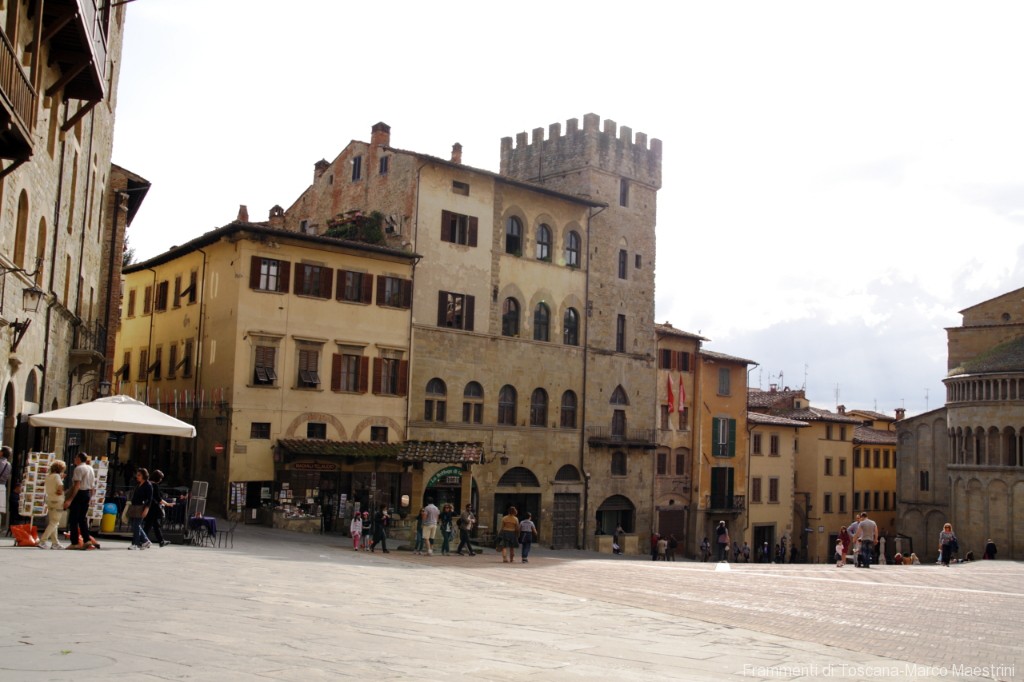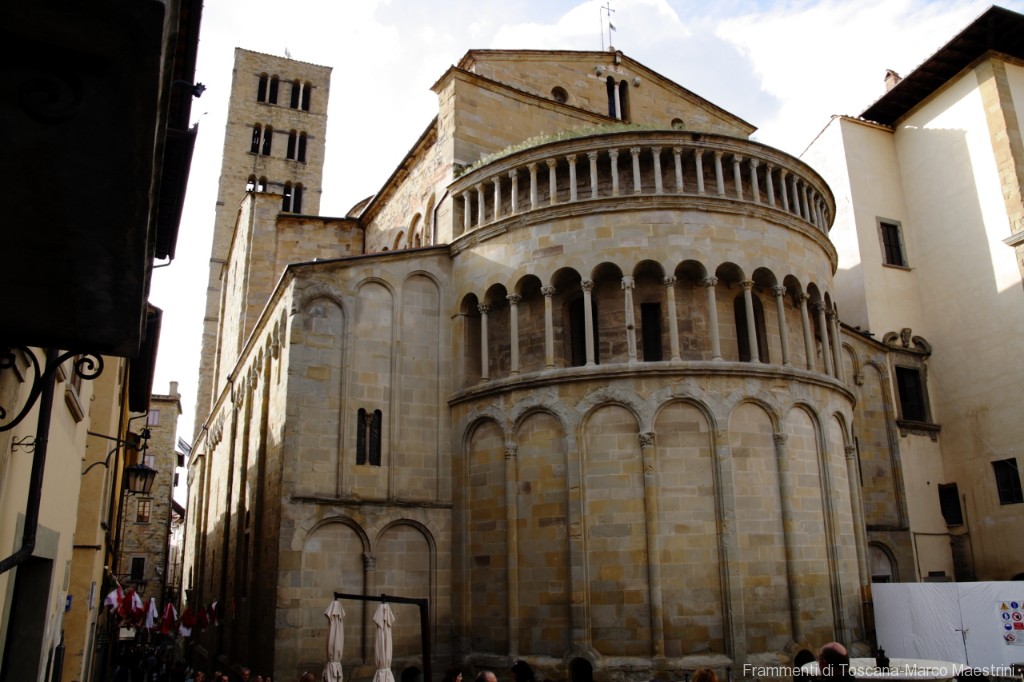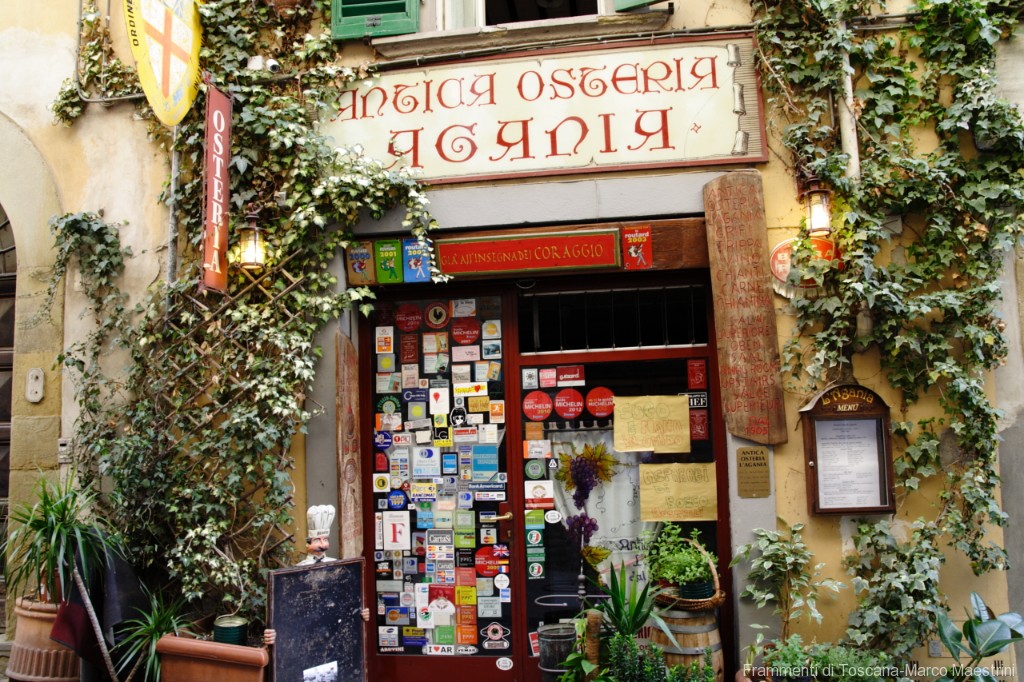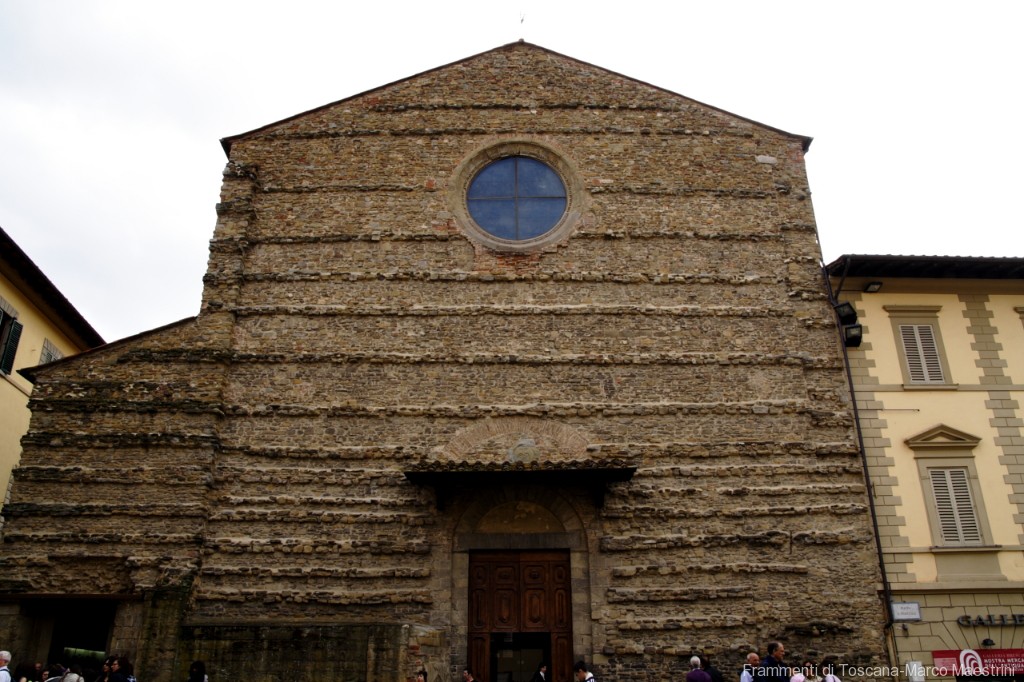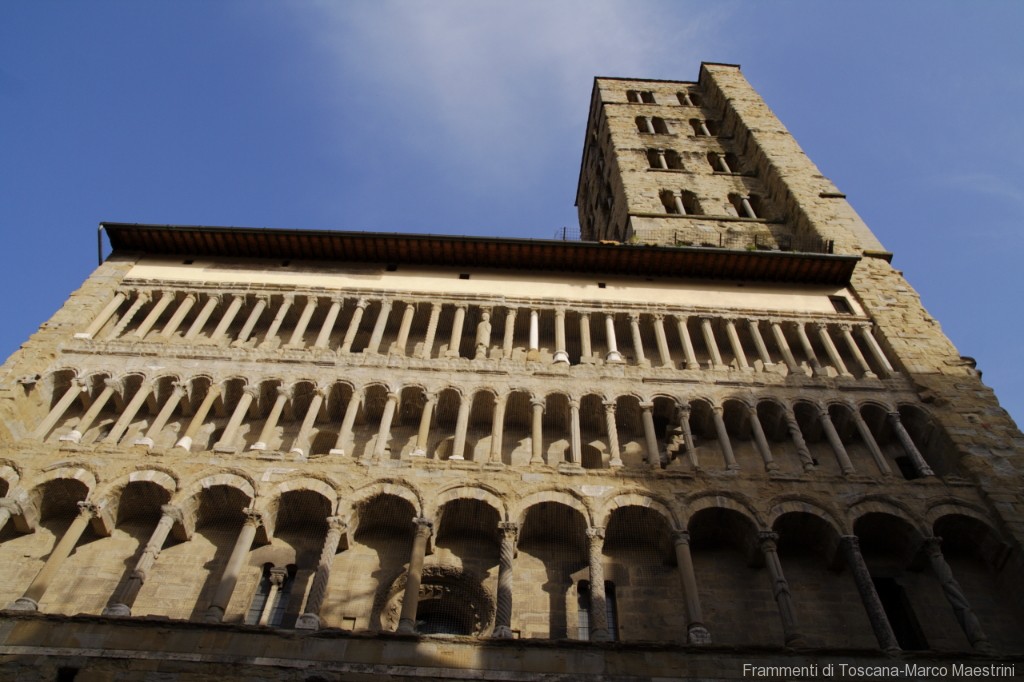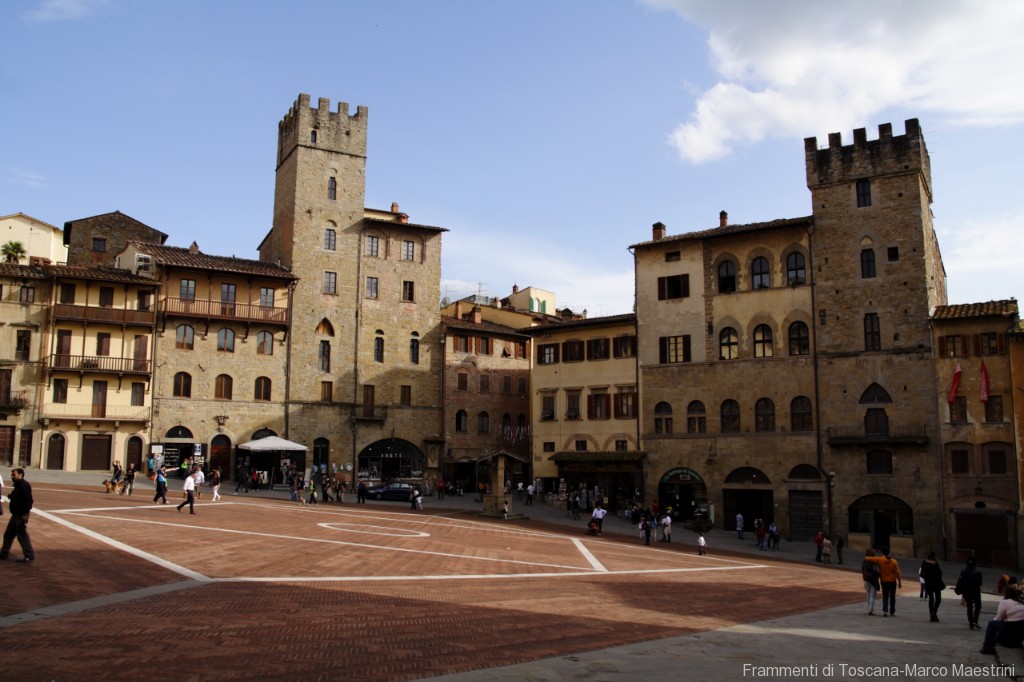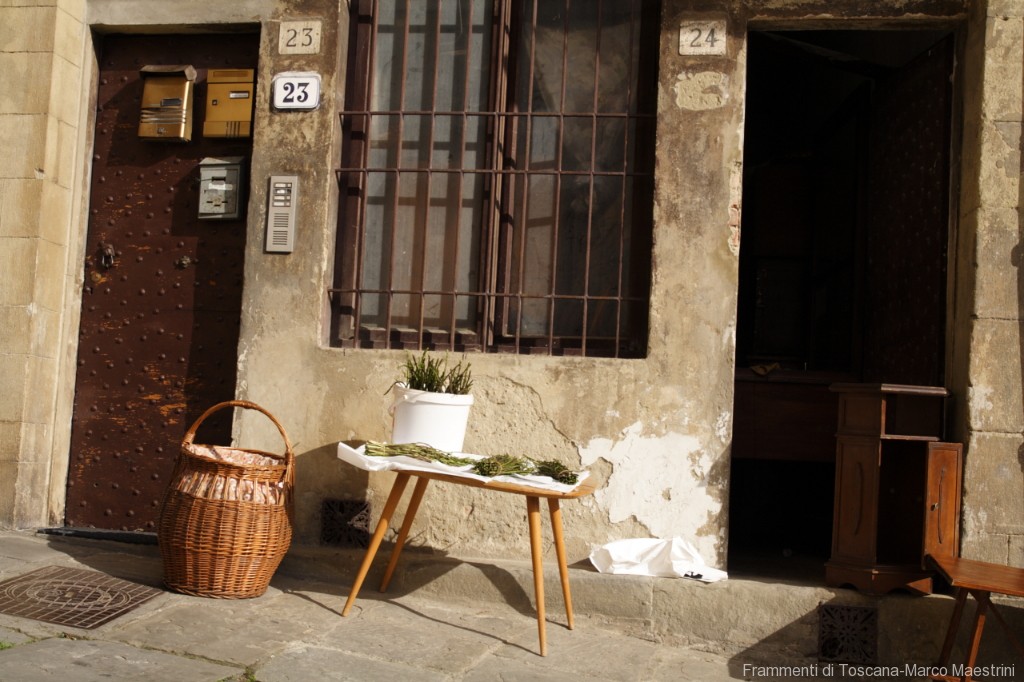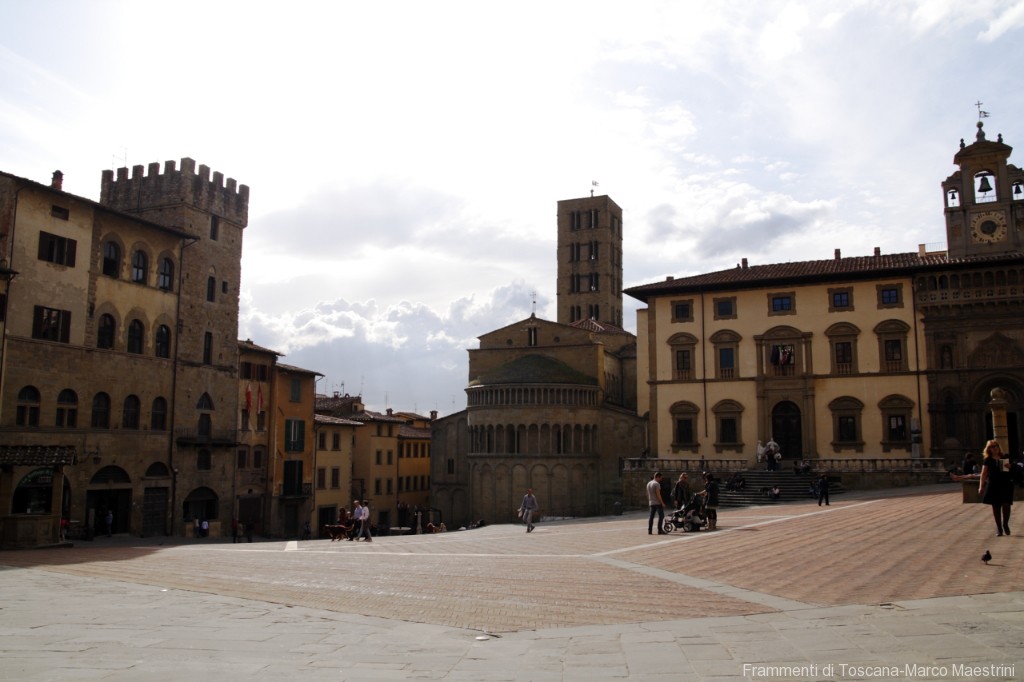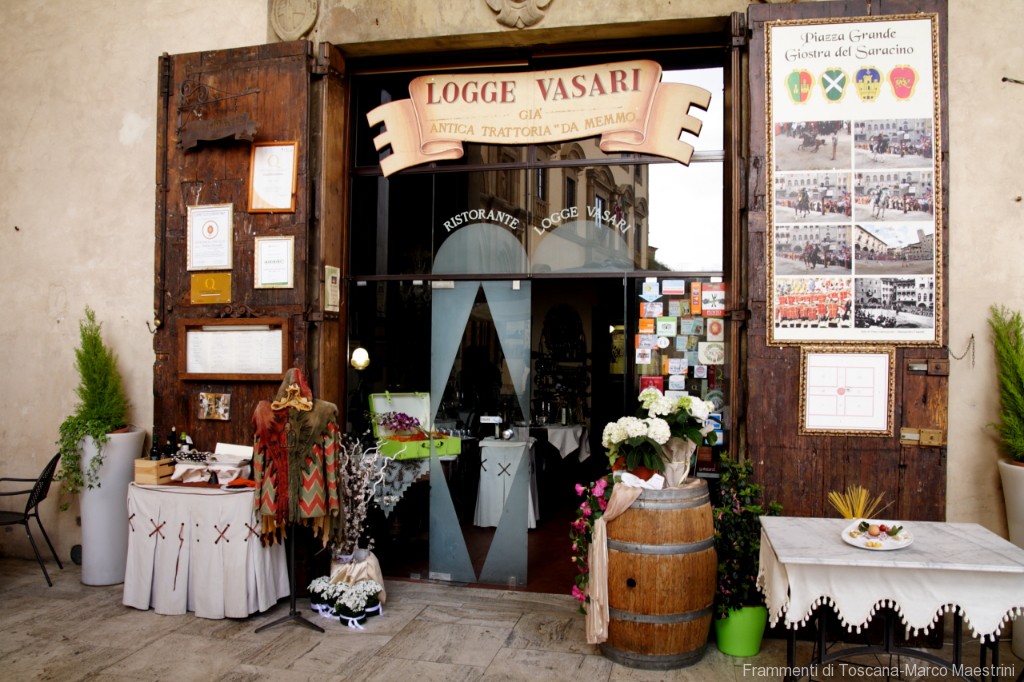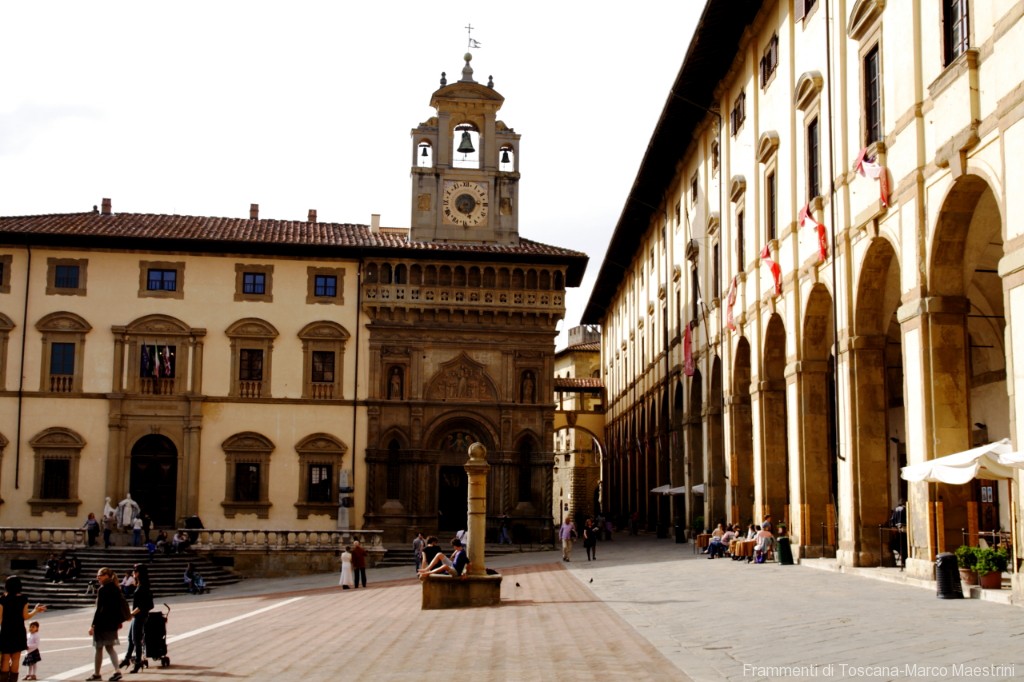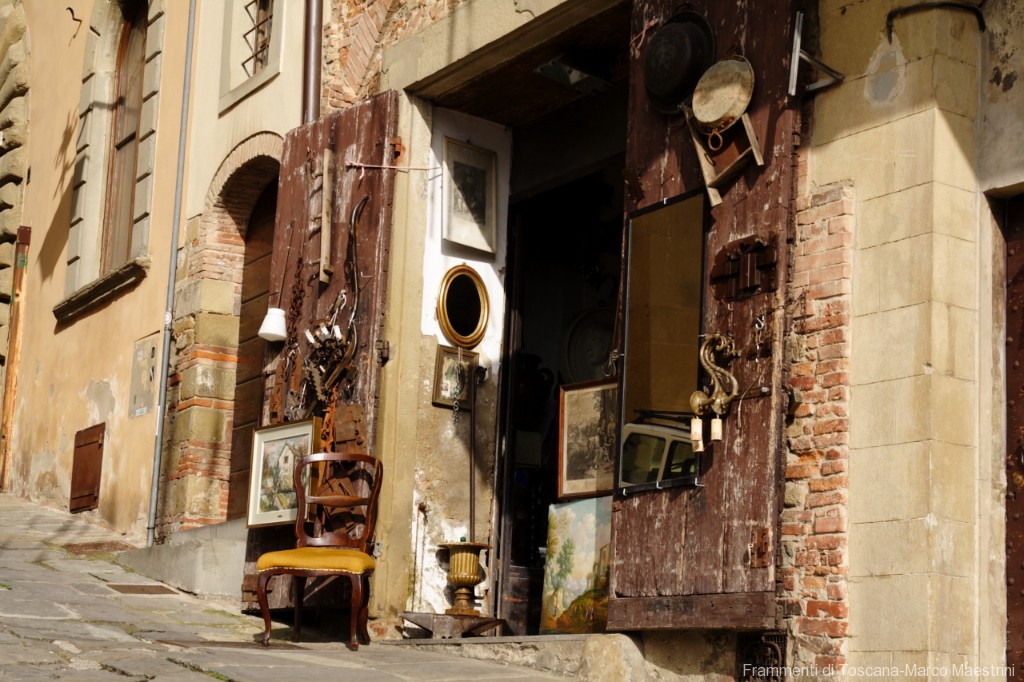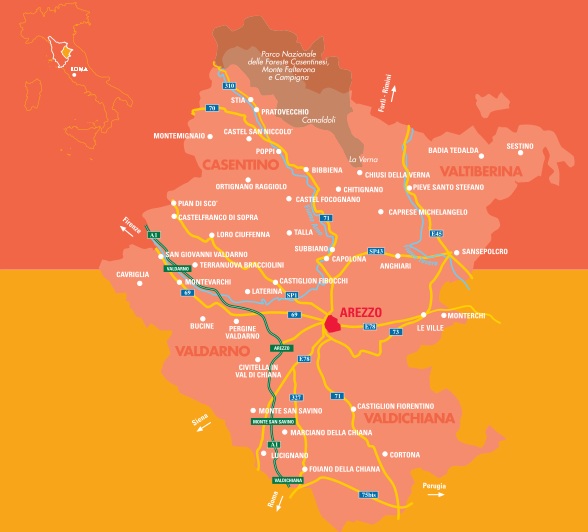Perhaps less popular than Siena and Lucca, but equally beautiful, Arezzo dates back to Etruscan and Roman times, and has become well-known thanks to Roberto Benigni’s Oscar-winning movie “Life is beautiful”, filmed in the marvellous historical centre of the town. Here are some suggestions for a visit to this gem of eastern Tuscany and some trips to the four valleys (Casentino, Valdarno, Valdichiana and Valtiberina) of its province. Enjoy your time in the land that was the birthplace of many bright personalities, such as Maecenas, Petrarch, Masaccio, Michelangelo, Giorgio Vasari, Piero della Francesca. This is also my homeland, where you can soak up the authentic atmosphere of Tuscany away from the tourist crowds that in high season plague Florence, Siena, San Gimignano, Pisa and most of the Chianti area.
1st Day – Town’s historic centre
PIAZZA GRANDE – Arezzo is small enough to be explored on foot. There are many car parks near the centre (the one called “Pietri” is free and an escalator connects it right to the historic old town). The visit starts from Piazza Grande, one of the most beautiful squares of Italy: surrounded by beautiful old buildings dating back to different centuries from the Middle Ages to Baroque, and a splendid Loggia designed by the famous architect Giorgio Vasari along the north side, it is spacious and quite sloping. Twice a year, in June and September, the Piazza is the set of the medieval Saracen Joust (Giostra del Saracino), a knightly game having its roots in the Middle Ages, and on the first Sunday of every month and the preceding Saturday it hosts a huge Antiques Fair, famous all over Italy.
HOUSE OF PETRARCH – If you exit Piazza Grande following the Vasari Loggia, you’re in the upper part of the Corso Italia, the main axis of the historic centre: lined with elegant boutiques, bars and cafés, and antiques shops, it’s the street leading to the main cultural and artistic attractions. If you walk uphill towards the Cathedral, some steps before it, on the left side of a small square, you can stop to visit the house of Petrarch. The poet, one of the founding fathers of the Italian language, was born in Arezzo in this building that is not the original medieval one but has been elegantly rebuilt in the XVI Century. Open Saturday, Sunday and festivities 10:30-16:30, ticket 4€ , reduced 3€, under 6 years for free.
CATHEDRAL – The Gothic Cathedral, or Duomo, devoted to Saint Donato, dominates the hilltop of the town, perhaps the ancient city’s acropolis. Its construction started at the end of the XIII century and ended at the beginning of the XVI, but the facade remained unfinished and was then realized at the beginning of the XX century.
PIAZZA DELLA LIBERTA’ – Next to the Cathedral, the square Piazza della Libertà is dominated by the medieval Palazzo dei Priori, seat of the Town Hall. Built in the 1300s and restored several times in the following centuries, it has a characteristic tower with a clock, offering to visitors a beautiful panoramic view of the town.
PIERO DELLA FRANCESCA FRESCOES – If you leave Piazza della Libertà and go down Via Cesalpino, after a few steps the Piazza and the Basilica of San Francesco appear to the view: the Church hosts in its Bacci Chapel the attraction that most visitors come to see: the wonderful fresco cycle “The Legend of the Cross”, painted by the Renaissance artist Piero della Francesca. This masterpiece is a must-see and shouldn’t be missed! Admission on reservation only, Monday to Friday 9-19:00 (summer time), 9-18:00 (winter time), Saturday 9-18 (summer time), 9 – 17:30 (winter time), Sunday 13-18:00 (summer time), 13-17:30 (winter time). You can reserve and purchase your tickets online following the link http://www.pierodellafrancesca-ticketoffice.it/. The website is in Italian, nevertheless you can also make your reservation once you get there, and the waiting is rarely more than a couple of hours. If you haven’t booked, you can make the Basilica your first stop, reserve your ticket and visit the rest of the sights while you wait for your turn. Ticket 8€, reduced 5 €.
SANTA MARIA DELLA PIEVE– After the visit to these magnificent frescoes, if you exit the Basilica of San Francesco and go along the spacious elegant street on the right (Via Cavour), you’re back in the Corso Italia. Turn left and walk again towards the Cathedral: after a few steps on your right side, one of the most beautiful churches of Tuscany can be admired: Santa Maria della Pieve, simply called “the Pieve” by the locals, is really enchanting. You could expect to find this jewel of medieval architecture standing in the main square of the town and dominating all the surrounding area, not along a street, if the main one. In fact, a larger space in front of this gorgeous church would have permitted a better and more complete vision of its magnificent Romanesque facade adorned with dozens of carved columns, each uniquely decorated. The 40 apertures of the characteristic bell tower make it called “the bell tower with 100 holes”. Above the central doorway are 13th-century carved reliefs known as the Ciclo dei Mesi, representing the months of the year. Inside, the highlight is Pietro Lorenzetti’s polyptych, one of the most refined examples of Sienese art in the Aretine territory.
HOT FILLED DONUTS “BOMBOLONI”! – Strolling in the centre may be tiring and you may need a rest. For a delicious bite, choose Bar Stefano, just a few steps away from the Pieve, on the same side of the Corso Italia. They make wonderful cakes and pastries, and at 4 p.m. hot bomboloni – fluffy pillows of tender fried pastry dough rolled in sugar, filled with Italian pastry cream or chocolate – shouldn’t be missed for a mouth-watering merenda (the Italian mid-afternoon snack).
ROMAN AMPHITEATRE AND ARCHEOLOGICAL MUSEUM – The ones of you who, after this tasty rest, wish to visit other sights, can make a jump back to the Roman times, by visiting the amphitheatre. Located in the southern part of Arezzo (the exact address is Via Margaritone 10) it dates back to the end of I – beginning of II century A.C. and could seat up to 8000 spectators. Abandoned after the Roman era, and repeatedly sacked in the following times as its precious materials served to build other constructions, the stalls and part of ambulatories are still visible. In the Middle Ages the Monastery of San Bernardo, that today hosts an interesting Archaeological Museum, was built on the remains of the southern part of the semi-circle. Open every day 8:30-19:30 (ticket 6 €, reduced 3 €, free entrance for all every first Sunday of every month ).
A TASTE OF AREZZO’S AUTHENTIC CUISINE – Like other towns in Tuscany and Italy, Arezzo has many good restaurants. Here is a couple of options we particularly like: for a refined dinner, the Restaurant “Logge Vasari” in Piazza Grande is highly recommended. The location is enchanting, under the Vasari’s Loggia with a splendid view on the square, and dishes are entirely homemade (from bread, to pasta, up to desserts and chocolates). It isn’t the cheapest place to eat in Arezzo, but it’s absolutely worth! If you prefer a more “rustic” experience, we suggest a nice restaurant still in the historic centre, 10 minutes walk from Piazza Grande, in Via Mazzini: often filled with many locals, the Antica Osteria l’Agania offers a very typical, simple and good food at a reasonable price. Don’t expect fine dishes, but good value and the authentic atmosphere of a family run old restaurant!
IInd day- A trip to one of the four valleys of the Arezzo’s province
Here are some of the top sights in each of the four valleys, quite easy to reach from Arezzo. In Casentino, the upper valley of the river Arno enclosed between the Apenine Mountains and the massif of Pratomagno, we suggest a visit to the hamlet of Poppi and its famous Guidi Castle that dominates the area; if you like hiking and trekking, plan an excursion through the wonderful Foreste Casentinesi National Park, a protected area in the Apennines between Tuscany and Romagna, including the largest and best preserved woodlands and forests in Italy, and housing a great heritage of flora and fauna (wolves and golden eagles among predators, foxes, wild boars etc). The forests and their surrounding natural habitats show also the signs of the millenary human presence: small villages, mule tracks, and the two sanctuaries of Camaldoli and La Verna. For detailed information to plan your trip, follow the link http://www.parks.it/parco.nazionale.for.casentinesi/Eiti.php
In Valtiberina or Upper Valley of Tiber, that evidently takes its name from river Tiber, which flows downhill from the Mount Fumaiolo in Emilia Romagna through the entire valley and then, after 400 kilometres, passes Rome and meets the Tyrrenian Sea, Anghiari is a charming and authentic medieval hamlet, perfectly preserved. Its small squares and narrow alleys are overlooked by nice craft workshops, palaces and houses with small windows and balconies adorned with colourful flowers. Another place to go to is the small village of Monterchi, where the splendid fresco of a pregnant Virgin Mary, the Madonna del Parto painted by Piero della Francesca, can be admired. It may be unbelievable that such a masterpiece is housed in such a small village: don’t be surprised, you’re in Tuscany! Open 9:00-13:00 / 14:00-17:00, closed on Tuesday from November to March, open daily from April to October, closed on December 25th. Ticket 5,50€, reduced 4 €, free entrance for pregnant women .
In Valdichiana, a broad natural amphitheatre enclosed between the Sienese hills and the Trasimeno lake, the wonderful town of Cortona shouldn’t be missed. Dating back to the Etruscans, has great a Archaeological Museum, a charming medieval historic centre to stroll in, have a snack (click here for a suggestion of ours), and enjoy a breathtaking view over the valley up to the Trasimeno lake and the Umbria Region.
Finally, as for the Valdarno valley, I would like to recommend my homeland, the Valdambra: set in the large green hilly space where last Chianti Mountains lick the Upper Valley of the Arno River, this small valley is dominated by wooded hills, enchanting medieval villages, and ruins of castles and towers of the ancient times. The itinerary starts from Bucine, the main village of the valley, and takes you to the Tower of Galatrona (click here for the post we have devoted to this place), then to the Castle of Cennina, the nice hamlet of Duddova, where a small wine bar on street offers nice and tasty snacks with typical products, then to Ambra, where I suggest to enjoy an aperitivo sat at the bar of the central square, the most beautiful of all the area, up to Montebenichi, a charming medieval village perfectly preserved, the hamlets of Sogna and Rapale, and the Abbey of Badia a Ruoti. The landscape is really enchanting, the intense green of woods embraces the stones of the small villages, towers and castles, and every hamlet offers picture postcard views.
If you have more than two days to spend around, you can obviously visit all the four valleys: you will enjoy the great variety of landscapes, but at the same time the harmony and authenticity that the land of Arezzo, still a little away from the classic tourist routes, can transmit.

